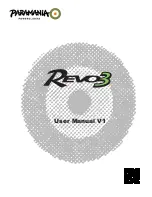
CESSNA
SECTION
7
MODEL 152
AIRPLANE & SYSTEMS
DESCRIPTIONS
1 July 1978
7-26
INTERIOR LIGHTING
Instrument and control panel lighting is provided by flood lighting, integral lighting, and post
lighting (if installed). Two concentric rheostat control knobs on the left switch and control
panel, labeled PANEL LT and RADIO LT, control intensity of the instrument and control panel
lighting. A slide-type switch (if installed) on the overhead console, labeled PANEL LIGHTS, is
used to select flood lighting in the FLOOD position, post lighting in the POST position, or a
combination of post and flood lighting in the BOTH position.
Instrument and control panel flood lighting consists of a single red flood light in the forward part
of the overhead console. To use the flood lighting, rotate the PANEL LT rheostat control knob
clockwise to the desired intensity.
The instrument panel may be equipped with post lights which are mounted at the edge of each
instrument and provide direct lighting. The lights are operated by placing the PANEL LIGHTS
selector switch, located in the overhead console, in the POST position and adjusting light
intensity with the PANEL LT rheostat control knob. By placing the PANEL LIGHTS selector
switch in the BOTH position, the post lights can be used in combination with the standard flood
lighting.
The engine instrument cluster (if post lighting is installed), radio equipment, and magnetic
compass have integral lighting and operate independently of post or flood lighting. Light
intensity of the radio lighting is controlled by the RADIO LT rheostat control knob. The integral
compass and engine instrument cluster light intensity is controlled by the PANEL LT rheostat
control knob.
A cabin dome light, in the overhead console, is operated by a switch on the left switch and
control panel. To turn the light on. move the switch to the ON position.
A control wheel map light is available and is mounted on the bottom of the pilot's control wheel.
The light illuminates the lower portion of the cabin just forward of the pilot and is helpful when
checking maps and other flight data during night operations. To operate the light, first turn on
the NAV LT switch; then adjust the map light's intensity with the rheostat control knob located
at the bottom of the control wheel.
A doorpost map light is available, and is located on the left forward doorpost. It contains both
red and white bulbs and may be positioned to illuminate any .area desired by the pilot. The
light is controlled by a switch, above the light, which is labeled RED, OFF, and WHITE.
Placing the switch in the top position will provide a red light. In the bottom position. standard
white lighting is provided. In the center position, the map light is turned off. Light intensity of
the red light is controlled by the PANEL LT rheostat control knob.
The most probable cause of a light failure is a burned out bulb; however, in the event any of
the lighting systems fail to illuminate when turned on, check the appropriate circuit breaker. If
the circuit breaker has opened (white button popped out), and there is no obvious indication of
a short circuit (smoke or odor), turn off the light switch of the affected lights, reset the breaker,
and turn the switch on again. If the breaker opens again, do not reset it.
Summary of Contents for 152 1979
Page 8: ...CESSNA GENERAL MODEL 152 1 July 1978 1 2 Figure 1 1 Three View ...
Page 50: ...CESSNA SECTION 4 MODEL 152 NORMAL PROCEDURES 1 July 1978 4 12 ...
Page 62: ...CESSNA SECTION 5 MODEL 152 PERFORMANCE 1 July 1978 5 2 ...
Page 82: ...CESSNA SECTION 6 MODEL 152 WEIGHT BALANCE EQUIPMENT LIST 1 July 1978 6 2 ...
Page 87: ...CESSNA SECTION 6 MODEL 152 WEIGHT BALANCE EQUIPMENT LIST 1 July 1978 6 7 ...
Page 88: ...CESSNA SECTION 6 MODEL 152 WEIGHT BALANCE EQUIPMENT LIST 1 July 1978 6 8 ...
Page 94: ......
Page 95: ......
Page 96: ......
Page 97: ......
Page 98: ......
Page 99: ......
Page 100: ......
Page 104: ...CESSNA SECTION 7 MODEL 152 AIRPLANE SYSTEMS DESCRIPTIONS 1 July 1978 7 4 ...
Page 105: ...CESSNA SECTION 7 MODEL 152 AIRPLANE SYSTEMS DESCRIPTIONS 1 July 1978 7 5 ...
Page 106: ...CESSNA SECTION 7 MODEL 152 AIRPLANE SYSTEMS DESCRIPTIONS 1 July 1978 7 6 ...
Page 112: ...CESSNA SECTION 7 MODEL 152 AIRPLANE SYSTEMS DESCRIPTIONS 1 July 1978 7 12 ...
Page 120: ...CESSNA SECTION 7 MODEL 152 AIRPLANE SYSTEMS DESCRIPTIONS 1 July 1978 7 20 ...
Page 123: ...CESSNA SECTION 7 MODEL 152 AIRPLANE SYSTEMS DESCRIPTIONS 1 July 1978 7 23 ...
Page 128: ...CESSNA SECTION 7 MODEL 152 AIRPLANE SYSTEMS DESCRIPTIONS 1 July 1978 7 28 ...
Page 133: ...CESSNA SECTION 7 MODEL 152 AIRPLANE SYSTEMS DESCRIPTIONS 1 July 1978 7 33 ...
Page 137: ...CESSNA SECTION 8 MODEL 152 HANDLING SERVICE MAINTENANCE 1 July 1978 8 2 ...














































